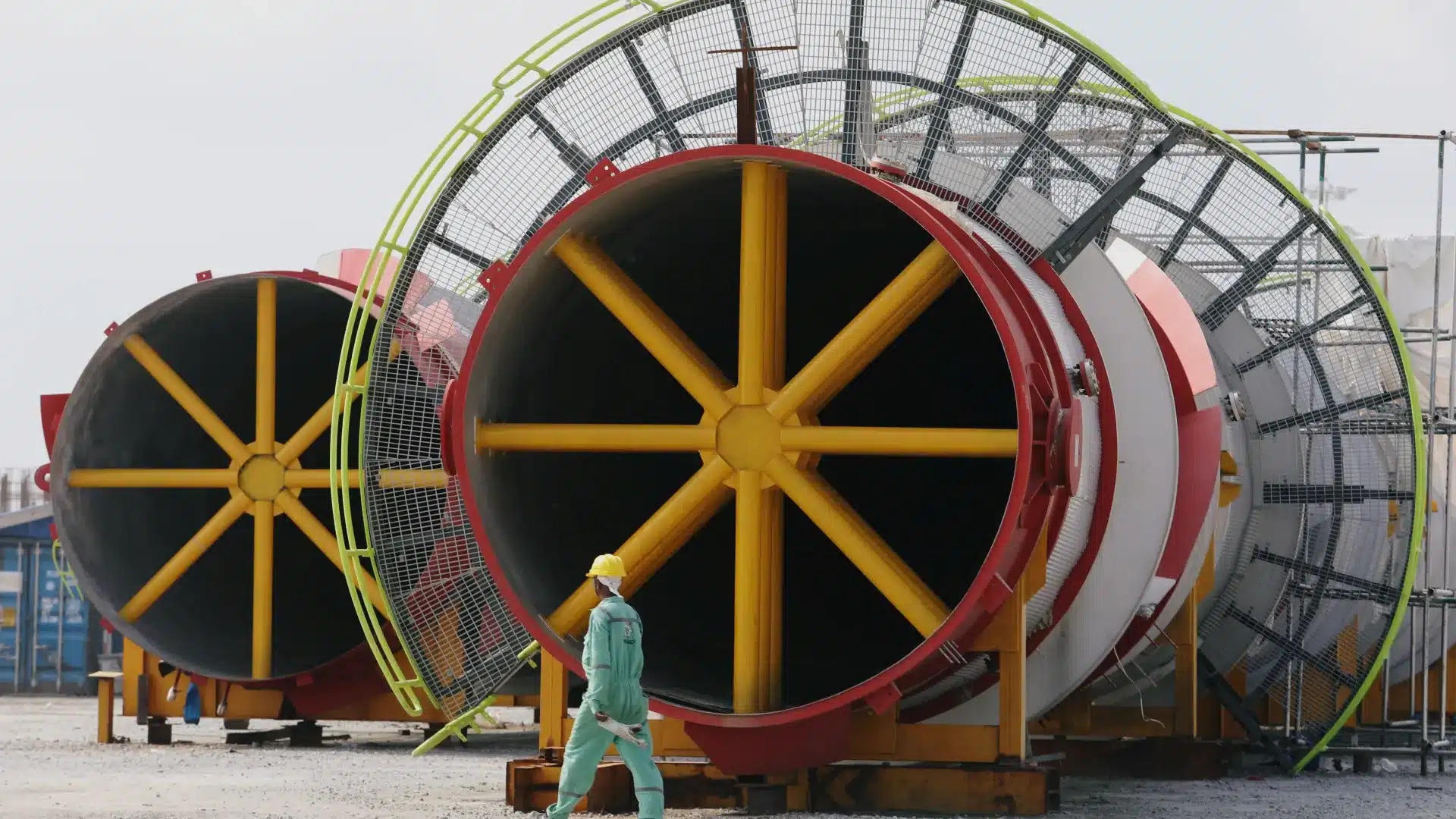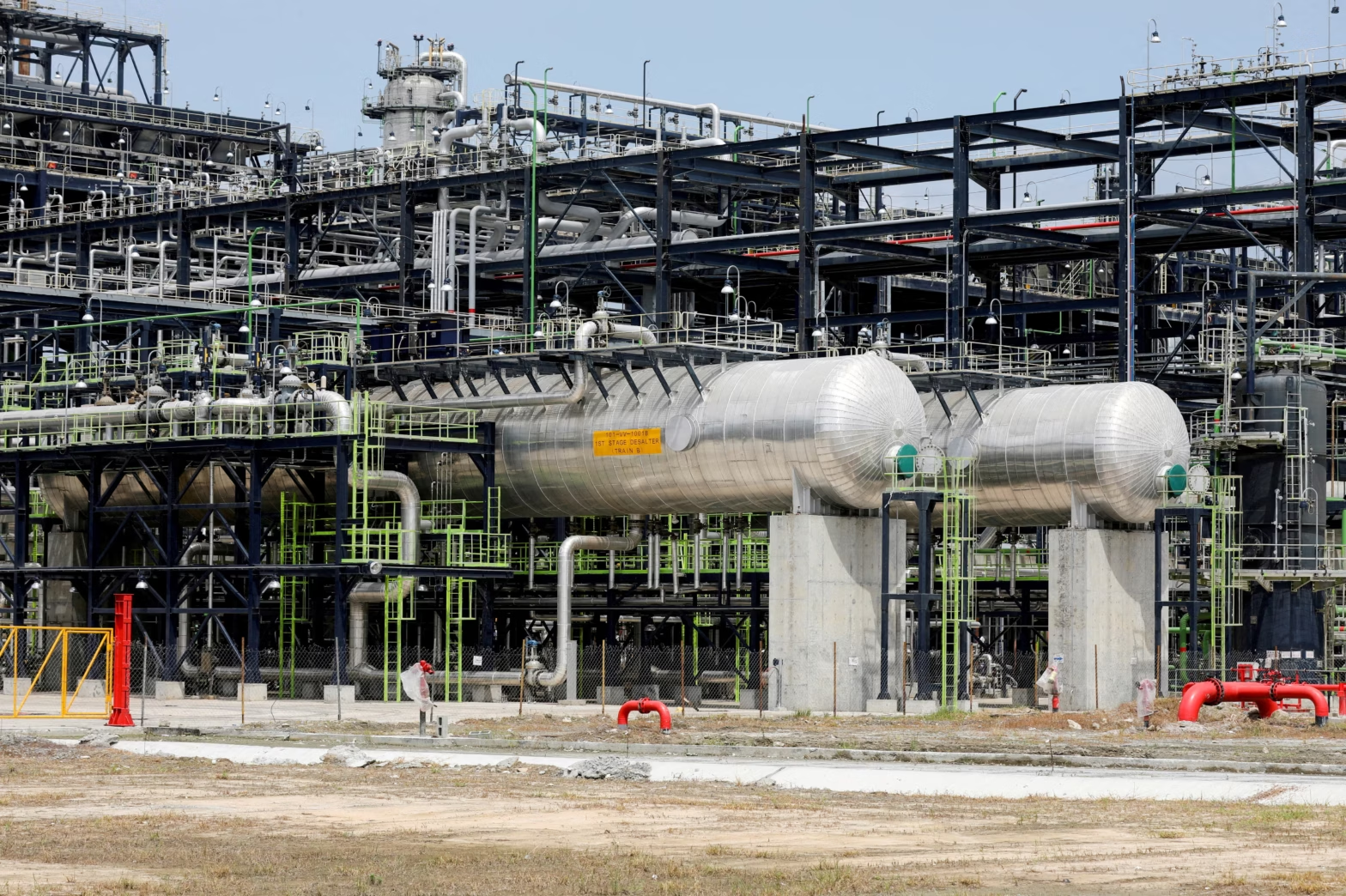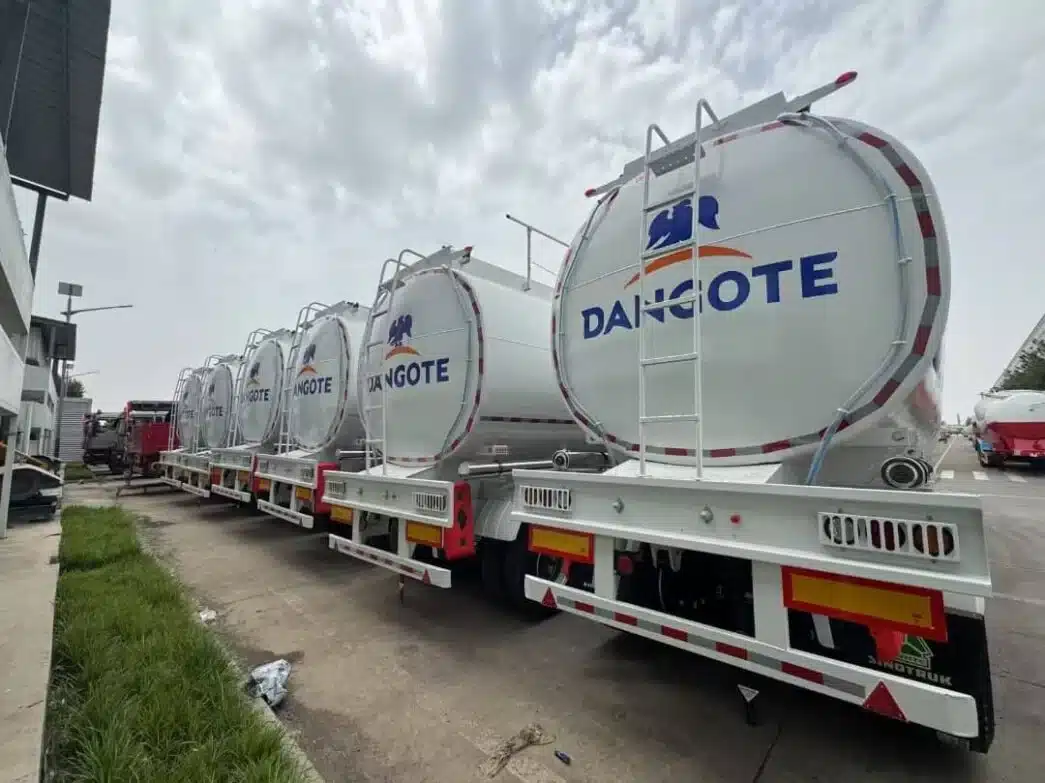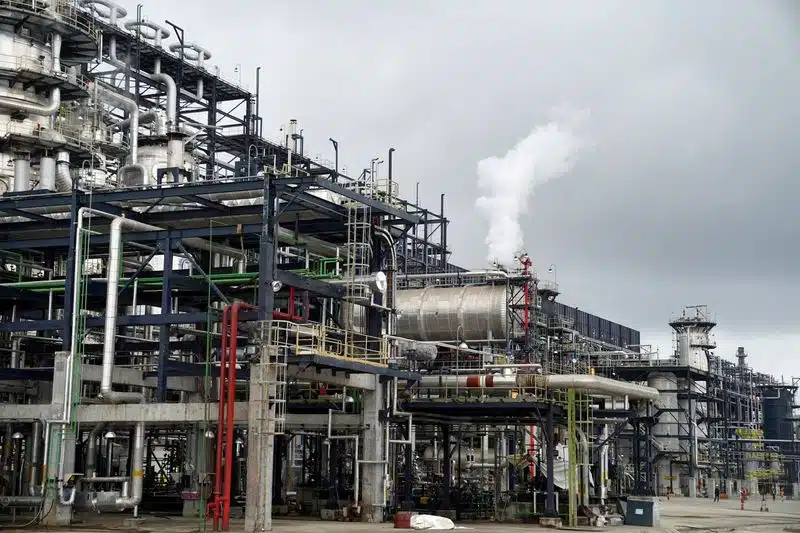Nigeria’s Dangote Refinery has officially entered the US jet fuel market, capitalising on a surge in American jet fuel imports.
Africa’s largest refinery has expanded beyond supplying neighboring countries, with its refined products—especially jet fuel—now reaching Asia, Europe, and North America. In just one year of commercial operations, the Dangote Refinery has established itself as a major global supplier.
In 2024, British Petroleum (BP) purchased its first jet fuel cargo of approximately 45,000 metric tons from the refinery for delivery to Europe.
By February 2025, the refinery had exported two cargoes of jet fuel to Saudi Aramco, marking its entry into the Asian petroleum market.
Between March 1 and March 24, 2025, the 650,000 bpd refinery shipped six vessels carrying approximately 1.7 million barrels of jet fuel to U.S. ports.
An additional 348,000 barrels are expected to arrive at the Everglades terminal by the end of the month.
Notably, even before Dangote entered the market, US jet fuel imports were already on the rise.
The country now brings in around 226,000 barrels per day to meet the demands of commercial airlines and military operations—the highest level since February 2023.
While US jet fuel consumption has yet to return to pre-pandemic 2019 levels, demand is expected to continue growing.
Increased imports are expected to boost fuel availability and help stabilize prices ahead of the peak summer travel season.
Since fuel costs are a major factor in airline ticket pricing, greater supply could lead to cheaper flights.
According to the US Energy Information Administration (EIA), fluctuations in jet fuel imports have created market gaps—one that Dangote Refinery can fill.
Its presence is further driving US jet fuel import levels to new post-pandemic records.
However, this development has sparked discussions among American trade analysts and storage brokers, with some concerned that Dangote’s entry could disrupt existing supply chains and reshape domestic market dynamics.
What the US aviation market looks like
The US operates the largest and most dynamic aviation market in the world, driven by a strong domestic and international air travel demand.
It has a well-developed airport infrastructure and a competitive airline industry.
As of 2024, the United States witnessed substantial daily air travel activity. The Federal Aviation Administration (FAA) stated that approximately 2.9 million passengers fly in and out of U.S. airports each day and an average of 45,000 daily flights.
The scale of air transportation in the U.S. is extensive and the sector plays a critical role in the nation’s economy, contributing over $1.9 trillion in economic activity and supporting more than 10 million jobs.
Major players in the U.S. commercial aviation market include American Airlines, Delta Air Lines, United Airlines, and Southwest Airlines.
These airlines operate extensive domestic and international routes, serving hundreds of destinations worldwide.
The daily consumption of jet fuel by the US aviation industry hovers around 1.6 million barrels, the supply of which is primarily sustained by domestic refiners that produce and distribute the fuel nationwide.
Domestic jet fuel suppliers in the US include major oil companies such as ExxonMobil, Chevron, BP, Shell, TotalEnergies SE, as well as Phillips 66, and Cenovus.
These suppliers operate extensive refining and distribution networks across the country.
Additionally, specialized suppliers of the jet fuel market in the US include Avfuel, Titan, Foster, and Sunoco. These companies offer both commercial and military jet fuels, adhering to stringent quality standards.
Overall, the U.S. jet fuel supply chain is intricate, involving interstate multi-product pipelines, off-airport terminals, and dedicated local pipelines to ensure efficient distribution to airports nationwide.
Major oil refineries Dangote will compete with
As the Dangote Refinery enters the U.S. jet fuel market, it will face competition from some of the country’s largest and most advanced oil refineries.
These refineries, primarily located along the U.S. Gulf and East Coasts, play a crucial role in meeting domestic jet fuel demand. Key competitors include:
- Motiva Refinery – Port Arthur, Texas
Located on the U.S. Gulf Coast, the Motiva Port Arthur Refinery in Texas is the largest refinery in North America, with a crude oil processing capacity of 720,000 barrels per day (bpd).
It produces various petroleum products, including aviation fuels. The refinery, owned by Saudi Aramco, benefits from a strong supply chain and direct access to Saudi crude oil.
Given its significant role in the U.S. refining industry, Motiva has long-term agreements with Shell and Phillips 66—two key players in the U.S. jet fuel market.
- Galveston Bay Refinery – Texas
Also located on the U.S. Gulf Coast, the Galveston Bay Refinery is one of the largest and most integrated refining facilities in the United States.
Owned by Marathon Petroleum Corporation, the Galveston refinery had a crude oil processing capacity of 631,000 bpd as of January 1, 2024.
It produces various petroleum products, including jet fuel, gasoline, and diesel.
- Garyville Refinery – Louisiana
The Garyville Refinery, also owned by Marathon Petroleum Corporation, is situated in Louisiana on the U.S. Gulf Coast.
It is among the largest refineries in the U.S., with a crude oil processing capacity of approximately 565,000 bpd.
The facility supplies a range of refined petroleum products, including jet fuel, to markets across the country.
- Baytown Refinery – Texas
The ExxonMobil Baytown Refinery, located in Texas along the Gulf Coast, is the third-largest refinery in the U.S., with a crude oil processing capacity of approximately 588,000 bpd.
One of the oldest and most technologically advanced refineries, Baytown produces a wide range of petroleum products, including jet fuel, for both domestic and international markets.
- Baton Rouge Refinery – Louisiana
The ExxonMobil Baton Rouge Refinery, also on the U.S. Gulf Coast, is one of the largest refining plants in the country.
Owned and operated by ExxonMobil, the refinery has a crude oil processing capacity of approximately 522,500 bpd.
It processes crude from various sources and plays a crucial role in supplying jet fuel to both domestic and international markets, even during volatile market conditions.
Beyond these major refineries in the U.S. Gulf Coast—the country’s largest refining region—several key refineries on the East Coast also contribute significantly to the U.S. aviation fuel supply. These include:
– PBF Refinery (Delaware) – 190,000 bpd
– PBF Refinery (New Jersey) – 180,000 bpd
– Monroe Refinery (Pennsylvania) – 185,000 bpd
– Bayway Refinery (New Jersey) – 250,000 bpd
– St. John Refinery (New Brunswick, Canada) – 320,000 bpd (serving the U.S. East Coast)
These refineries are vital to meeting fuel demand in key East Coast aviation hubs such as New York (JFK, LaGuardia, Newark), Philadelphia, and Washington, D.C.
While the exact jet fuel output from these refineries is not publicly disclosed, production fluctuates based on operational decisions and market demand.
However, according to the U.S. Energy Information Administration (EIA), as of 2024, total kerosene-type jet fuel production capacity across all U.S. refineries stood at approximately 1.57 million barrels per day.
How Dangote Refinery Compare to these big oil firms
The total daily production of aviation fuel by all U.S. refineries, estimated at approximately 1.57 million barrels by the EIA, remains significantly higher than the 1.7 million barrels that Dangote Refinery has exported to the U.S. this month.
While this milestone marks a notable entry into the U.S. jet fuel market, analytically speaking, Dangote’s production capacity remains dwarfed by the total U.S. daily output and imports.
You can only imagine how long it took the Nigerian mega refinery to accumulate such an export volume.
Also, even at full refining capacity, Dangote Refinery is expected to produce 4 million liters (approximately 25,000 barrels per day) of jet fuel, representing just 11% of current U.S. jet fuel imports and a mere 1.6% of the total daily production in the U.S.
Despite its jet fuel export attempts, Dangote Refinery has transformed Nigeria’s domestic jet fuel market.
Soon after launching aviation fuel production, it began supplying cheaper Jet A-1 to Nigerian airlines. As of October 2024, the refinery supplied two-thirds of Nigeria’s daily jet fuel consumption, reducing imports from 14,100 barrels per day to just 5,000 barrels per day.
While shifting focus from Africa’s ready aviation fuel market to meeting temporary shortages in the U.S. may seem like a strategic move, many experts question whether it is economically sustainable for the new refinery in the long run.
However, Dangote still has several competitive levers to secure a long-term share of the U.S. jet fuel market, competing against top oil refineries in the Gulf Coast and East Coast refining hubs.
Dangote Refinery’s competitive edge in US jet fuel market
The Dangote Refinery has the potential to carve out a strong position in the U.S. jet fuel market, leveraging its large-scale refining capacity of 650,000 barrels per day to produce aviation fuel at competitive prices.
With economies of scale and lower operational costs, the refinery could offer cost-effective jet fuel, challenging U.S. refiners facing higher production expenses.
One of Dangote’s key advantages lies in its modern infrastructure. The average age of U.S. refineries is approximately 74 years, with most plants in the Gulf Coast and East Coast regions operating for several decades.
While these refineries have undergone modifications over the past 40 years, newer facilities with advanced technology—like Dangote—typically benefit from lower maintenance costs and higher efficiency.
Though Nigeria is not traditionally a major jet fuel exporter to the U.S., the refinery’s location along Atlantic shipping routes gives it a logistical edge in supplying both U.S. Gulf Coast and East Coast markets.
Additionally, major global traders such as BP, Vitol, and Trafigura—already supplying crude to the Dangote Refinery—have well-established distribution networks in the U.S., potentially easing the refinery’s entry into the market.
The refineries can leverage potential market entry entry strategies like:
– Long-term jet fuel supply contracts in regions that depend on imports.
– Swap agreements, exchanging refined jet fuel for WTI crude, offering mutual benefits.
– Spot market sales to meet seasonal or emergency demand surges.
Furthermore, the Dangote Refinery is designed to produce Euro V-compliant fuels that align with U.S. Federal Aviation Administration (FAA) and ASTM D1655 standards. The refinery can make a seamless entry into the U.S. jet fuel market traditionally supplied by Canada and Europe, amidst ongoing tariff disputes and supply chain disruptions.
Infrastructure and supply chain limitations for Dangote refinery
To establish a significant presence, the Dangote Refinery must develop efficient supply chains, including robust storage and transportation infrastructure.
In contrast, U.S. refineries benefit from well-established distribution networks and pricing power, giving them a competitive edge.
Navigating U.S. government regulations, subsidies, and pricing controls is crucial for the profitability of Dangote’s jet fuel ventures. Understanding and complying with these factors will be essential to operate successfully in the U.S. market.
As of February 2025, U.S. jet fuel inventories reached 45.2 million barrels, the highest level for that month since 1999. This increase in supply has driven higher demand for storage tank leases in key hubs such as Houston and New York Harbor.
Such elevated inventory levels could reduce the market share available to new entrants like Dangote in the medium term. More so, in the long term, since U.S. refineries are strategically positioned to meet domestic demand more efficiently.
To compete effectively, the Dangote Refinery must focus on:
– Offering competitive pricing to attract U.S. buyers.
– Enhancing refining processes to reduce costs.
– Streamlining transportation and storage to ensure timely deliveries.
– Adhering to U.S. policies and standards to avoid legal hurdles.
While the U.S. aviation sector is experiencing steady growth in jet fuel demand, driven by increased air travel, the Dangote Refinery’s success will depend on its ability to navigate these challenges and differentiate itself in a competitive market.










